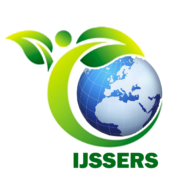The Image of Men in the Pararaton Translation by KI J. Padmapuspita and the Novel Ken Angrok Sang Brahmaputera by Damar Shashangka (Masculinity Approach)
This research aims to 1) Reveal the image of men’s physical strength in the translation of Pararaton by Ki J. Padmapuspita and the novel Ken Angrok by Damar Shashangka through a masculinity approach. 2) Reveal the image of male courage in the translation of Pararaton by Ki J. Padmapuspita and the novel Ken Angrok by Damar Shashangka through a Masculinity Approach. 3) Revealing the image of male social relations in the translation of Pararaton by Ki J. Padmapuspita and the novel Ken Angrok by Damar Shashangka through a masculinity approach. 4) Revealing the image of the male mindset in the translation of Pararaton by Ki J. Padmapuspita and the novel Ken Angrok by Damar Shashangka through a masculinity approach. The research uses a qualitative descriptive method, namely a method that provides solutions to problems that are observed by describing or depicting the state of the research object or subject. A researcher of literary works is required to reveal emerging facts or data by providing descriptions. This research resulted in 1) Ken Arok is someone who has strength and physical abilities but has an angry nature and often loses control. 2) Masculinity is not always related to strength and dominance, but also in the form of courage to sacrifice oneself for others. Wiraraja was a man who was intelligent, cunning and full of tactics. 3) Lembong as Ken Arok’s father has initiative and social values. Taun Sahaja and Tita are people who have a good social spirit. And Ken Arok is depicted in a social structure that is very dominating over the opposite sex. And has the ambition to rise in social status.

